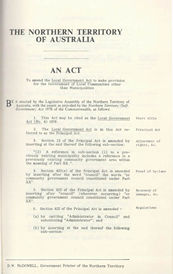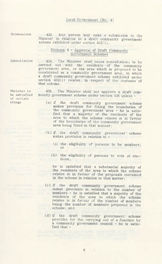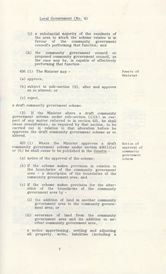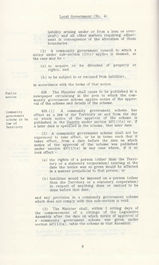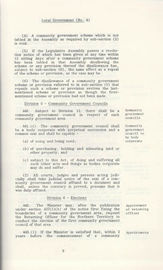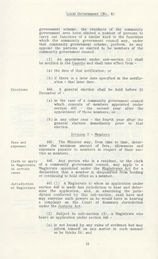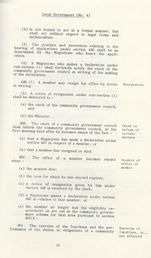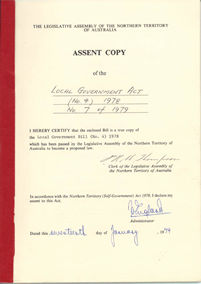

Local Government Act 1978 (NT)
Significance
This law, passed by the Legislative Assembly in 1978 and assented to by the Administrator on 17 January 1979, amended earlier legislation in order to provide for the establishment of community government in outlying settlements within the Northern Territory. Though general in its provisions, the law was intended to promote local government in Aboriginal communities throughout the Territory.
History
In promoting the extension of local government, the Legislative Assembly built on a tradition extending back to 1874, five years after Goyder's survey of town and country lands around Port Darwin. The town of Palmerston developed at the entrance to Darwin harbour; it began as – and remained – the administrative and commercial centre of the Territory. Local government received an early start with the proclamation in 1874 of the District of Palmerston and the first District Councillors under the District Councils Act (No. 10 of 1858) of South Australia.Local government in Palmerston (renamed Darwin in 1911) followed a rocky road. The Palmerston District Council, elected on a ratepayer franchise, struggled to survive until it was replaced by the Darwin Town Council in 1915. In 1931 the Council members resigned en masse over a perennial issue, government interference, and the Commonwealth appointed a Mayor and four councillors. Weary of the struggle to make ends meet, this Council petitioned the government, in 1935, to take control of the town. The citizens met in protest, to no avail. In April 1937 the Commonwealth Government took control of municipal affairs and representative local government ceased to exist in the Northern Territory.
This position continued until March 1942, when the whole of the Territory came under the provisions of the National Security (Emergency Control) Regulations after the first Japanese air-raid on Darwin during the 1939–45 war. Army control remained until March 1946, and local government did not revive until 1957. In that year the Northern Territory Legislative Council, established 10 years before, passed a Local Government Ordinance (No. 32 of 1957) and the Corporation of the Municipality of Darwin came into being.
During the next 20 years, the Commonwealth government promoted the expansion of local government as a prerequisite for more substantial political advancement. The Local Government Ordinance, amended 55 times before self-government, laid the base for fully-elected Local Councils in Alice Springs (1971), Katherine and Tennant Creek (1978).
Since self-government, Darwin's satellite town, the new Palmerston, has received its own elected Council; and the 1978 Local Government Act extended the privilege to Aboriginal communities.
The 1978 Act was the culmination of more than 100 years of struggle to provide a firm base for local government in the Northern Territory. In making provision for Aboriginal communities to control their own local affairs, it took a considerable step towards the recognition of Aboriginal autonomy. Twenty years after this Act was passed, 28 Aboriginal Community Councils had been established in the Northern Territory.
Sources
Heatley, Alistair, Almost Australians: The Politics of Northern Territory Self-government, Australian National University, North Australia Research Unit, Darwin, 1990.
Heatley, Alistair, The Government of the Northern Territory, University of Queensland Press, Brisbane, 1979.
Heatley, Alistair, The Territory Party: the Northern Territory Country Liberal Party 1974–1998, Northern Territory University Press, Darwin, 1998.
Powell, Alan, Far Country: A Short History of the Northern Territory, Melbourne University Press, Melbourne, 1996.
Description
| Long Title: | Local Government Act (No. 4 of 1978) (No. 7 of 1979) |
| No. of pages: | 28 + cover |
| Medium: | Paper |
| Measurements: | 18 x 25 cm |
| Provenance: | Legislative Council of the Northern Territory |
| Features: | Red tape on spine, signatures on front cover |
| Location & Copyright: | Attorney-General's Department Library, Northern Territory |
| Reference: | None |
